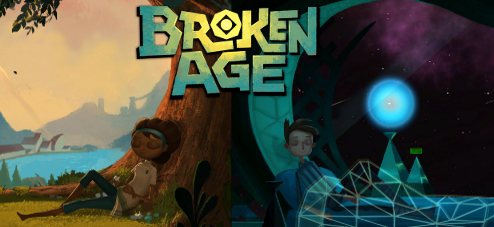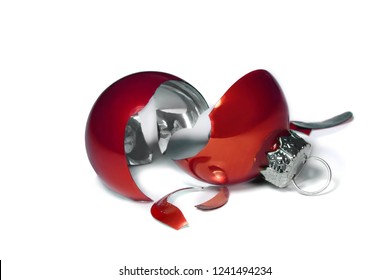Broken Baubles Mac OS
Download the Adobe Flash Player uninstaller:
- Mac OS X, version 10.6 and later: uninstall_flash_player_osx.dmg
- Mac OS X, version 10.4 and 10.5: uninstall_flash_player_osx.dmg
The uninstaller is downloaded to the Downloads folder of your browser by default.
In Safari, choose Window > Downloads.
If you are using Mac OS X 10.7 (Lion), click the Downloads icon displayed on the browser.
To open the uninstaller, double-click it in the Downloads window.
Note: If the Flash Player installer window does not appear, choose Go > Desktop in the Finder. Scroll down to the Devices section and click Uninstall Flash Player.
To run the uninstaller, double-click the Uninstaller icon in the window. If you see a message asking if you want to open the uninstaller file, click Open.
- Bookmark or print this page so that you can use the rest of these instructions after you close your browser.
To close all browsers, either click the browser name in the Uninstaller dialog, or close each browser manually and then click Retry.
Note: Do not click Quit in the Uninstaller window. It stops the uninstallation process.
After you close the browsers, the uninstaller continues automatically until the uninstallation is complete. When you see the message notifying you that the uninstallation succeeded, click Done.
Delete the following directories:
- <home directory>/Library/Preferences/Macromedia/Flash Player
- <home directory>/Library/Caches/Adobe/Flash Player
Shut down your Mac Simply click on the Apple () menu and select Shut Down. Now, you need to hold down the Command (⌘) + R keys and press the Power button. Now, make sure to hold down the Command (⌘) and R keys until the Apple logo shows up on the screen. Explore the world of Mac. Check out MacBook Pro, MacBook Air, iMac, Mac mini, and more. Visit the Apple site to learn, buy, and get support.
Mac OS X contains a variety of tools for repairing disk, partition, and file system errors. These options work like chkdsk on Windows, checking for disk and file system errors and repairing them. You can perform a check from within Mac OS X, but it may sometimes be necessary to use recovery mode to fix problems. Here’s how you can fix broken Mail search on macOS Catalina and Big Sur. Restart Spotlight Indexing Your first step in fixing broken Mail search should be to stop, clear, and restart your.
Hi, my 4-year-old MacBook Pro has died (Model A1260). The people at the Apple Store have confirmed that it's a dead logic board. I have some important files on the computer that were not backed up. How can I retrieve these files? Preferably, I'd like to be able to access these files on a PC, but if need be, I can borrow my friend's iMac to do the transfer. Thanks!
Unlike external devices, internal hard drives are sturdier and they don't run into problems as often as flash drives. But they don't last forever. Sometimes, they tend to get corrupted and you will suffer from data loss. It is not easy to recover files from hard drives on a Mac computer which is functioning well.
If you need to transfer files from a broken Mac to a new Mac, things would become more complex. In this article, we will talk about that. Usually, there are two accassions:
- 1. If you only have the unbootable Mac.
- 2. If you have two Macs.
Tutorial to transfer files from broken Mac to new Mac

iBoysoft Data Recovery Software for Mac is free Mac hard drive data recovery software which has helped lots of users transfer documents, pictures, audios, videos, emails that files from broken Mac to new Mac, recover lost data from dead MacBook Pro/MacBook Air/iMac, recover lost data from unbootable Mac computer, recover lost data from failed internal Mac hard drive, etc.

There is no need to take out the broken Mac internal HD. You are allowed to create a bootable USB and recover lost data or run the software through iBoysoft Server.
Solution 1: If you have only one unbootable Mac computer
If you have only one computer at your hand, the best solution you can try is to run iBoysoft Data Recovery for Mac through iBoysoft Server to recover lost data.
Note: To perform the steps below, please make sure you can boot your problematic Mac into Internet Recovery Mode. That's to say, you need to connect it to a network, such as a WIFI network.
- 1. Restart your Mac and press Command +Option +R key combinations to boot into macOS Recovery mode.
- 2. Choose a network for your Mac. You need to make your Mac connected to the Internet all the time.
- 3. Click Utilities in the top menu and select Terminal from the drop-down menu.
- 4. Type in the command line below:
- and then press Enter. This will launch iBoysoft Data Recovery for Mac through iBoysoft Server.
- 5. When iBoysoft Data Recovery for Mac is launched, select the Mac hard drive in the list and click on Next to scan for files on this drive.
- 6. Select the files you want to get back and preview them, and then click on 'Recover' to recover them.
Solution 2: If you have two Macs
Broken Baubles Mac Os X
- 1. Download iBoysoft Data Recovery for Mac on another Mac computer.
- 2. Install and launch iBoysoft Data Recovery for Mac on the healthy Mac computer.
- 3. Click iBoysoft Data Recovery on the menu bar and then select 'Create Boot Drive'.
- 4. Insert a USB drive into the healthy Mac computer.
- 5. Follow the wizard to create a bootable recovery drive on the USB drive.
- 6. When the creation process completes, you can insert the USB drive into the unbootable Mac computer, and then press the Power button and Option key (⌥) to start the Mac.
- 7. Select iBoysoft Data Recovery for Mac from the boot options.
Note: If you're running macOS Mojave or earlier, iBoysoft Data Recovery for Mac will launch immevdiately when your Mac boots up. But, if your Mac is running macOS Catalina, you need two additional steps to launch this program.
- 8. Wait for your Mac to boot up, open 'Terminal' application from 'Utilities' drop-down menu.
- 9. Run the following command:
- 10. Follow the wizard to scan for the lost data on the corrupted internal hard drive, choose the files you want to get back, and then click Recover button.
How to fix a broken Mac computer?
After transferring files from broken Mac to new Mac, you can reformat the system disk and reinstall macOS to make it usable again.
Broken Baubles Mac Os 11
- 1. Boot your Mac to macOS Recovery mode: hold down Command + R keys immediately after pressing the power button to turn on your Mac, release the keys until you see the Apple logo.
- 2. Select Disk Utility from the macOS Utilities menu.
- 3. Select the broken system drive from the side bar.
- 4. Click on Erase from the top.
- 5. Setup the required information to reformat the disk and click Done when finished.
- 6. Go back to macOS Utilities screen and select Reinstall macOS.